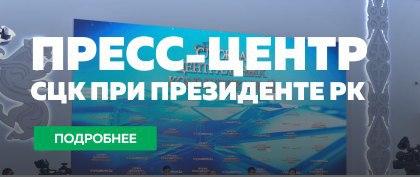21 years have passed since the announcement of the city of Akmola, later renamed to Astana, the capital of the Republic of Kazakhstan. The decision to transfer the capital was made by the Supreme Soviet of the Republic of Kazakhstan on July 6, 1994, and after that the preparatory work was going on. To intensify the construction and infrastructure development in Akmola in 1997, the Akmola special economic zone was created, which largely contributed to the formation of the new capital, ortcom.kz reports with reference to the MIA Kazinform.
By Decree of the President of the Republic of Kazakhstan Nursultan Nazarbayev dated October 20, 1997, the city of Akmola was declared the capital of the republic from December 10, 1997, and at the same time the redeployment of state bodies to Akmola began. On May 6, 1998, after long discussions and analysis, the country's leadership decided to change the name of the city to Astana, which, in Kazakh, means “capital”.
For 21 years, not only the architectural appearance of the capital has changed beyond recognition, but also indicators of the socio-economic development of the city. In the capital, the business sphere, construction, services and trade, and the transport industry are developing dynamically.
Thus, according to the statistics department of the city of Astana, over the past years the budget has increased 77.5 times - from 6.4 billion tenge in 1997 to 496.1 in 2017. The gross regional product of the city grew almost 224 times, reaching more than 5 trillion. in 1997 - 25.7 billion tenge, which, in per capita terms, is 2 times higher than the national average. The annual volume of investments increased 50 times - from 19.3 billion tenge to 956.9 billion tenge.
In this short time, large enterprises appeared in the city, which ensured the growth of the industrial production of the capital. The social infrastructure is also developing: schools and kindergartens are being built, the utilities system is being modernized, the transport sector is improving. State budget revenues increased by 73 times - from 13.6 billion tenge in 1998 to 990.2 in 2017, and reached about 1 trillion. tenge, of which 77%, or 766 billion tenge, is directed to the republican budget.
The main symbol of the new capital, its original “calling card”, was the “Baiterek” complex. Other unique architectural structures include the Palace of Peace and Accord, designed by the famous British architect Norman Foster and made in the shape of a pyramid, the Khan Shatyr shopping and entertainment center, the tallest building in the world, the Duman Aquarium, the creation of Manfredi Nicoletti - the central concert hall "Kazakhstan", residential complexes "Triumph Astana" and "Northern Lights", office buildings of national companies "KazMunaiGaz" and "Kazakhstan Temir Zholy".
Among the new sports facilities in Astana are the Astana-Arena stadium for 30 thousand spectators, the unique Sary-Arka cycle track for 10 thousand seats, recognized in 2011 as the best in the world. Another important sports complex is the Alau Ice Palace, which meets the highest international standards.
The capital is connected by friendly and twinned relations with more than twenty cities of the world. In July 1999, Astana was awarded the UNESCO “City of the World” prize. Since 2000, the main city of Kazakhstan is a member of the International Assembly of Capitals and Major Cities.
Today Astana has become the center of the Eurasian space, where various forums, congresses and other events of international importance take place. Over the past few years, the capital of Kazakhstan has repeatedly been the focus of attention of the entire global community. Congresses of leaders of world and traditional religions, the Astana Economic Forum and other internationally significant events are held in the capital on a regular basis. The historic OSCE Summit was held in Astana, the anniversary summits of the SCO and the OIC were held. In early 2011, the capital of the republic received participants and guests of the VII Asian Winter Games. In 2017, the international exhibition EXPO-2017 on the theme: “Energy of the Future” was held with great success in Astana.
Since January 2017, the capital of Kazakhstan has become a platform for negotiations on the situation in Syria. It should be noted that this is the first time in the history of the Syrian conflict when, during a peaceful settlement, both the SAR authorities and the rebels opposing them turned out to be at the negotiating table.










